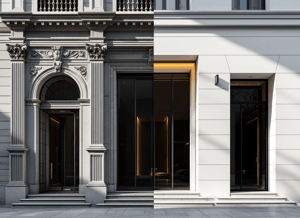So, what do you do?
You’re at a networking event, and you ask someone where they work.
‘Dead Red Design.’
‘What do you do?’
‘We help companies increase their brand awareness, and their brand value, through better graphic and product design.’
‘I see.’
We all get this question. At dinner parties. In airplanes. On first dates.
For some of us, particularly those of us in the service sector, it can be hard to answer.
Hell, it can even be tough for entire companies to pin down what they do in one succinct blurb. Clients ask us to develop their ‘elevator pitches’ all the time.
The main issue is usually that we all do a little bit of a lot of things. People and companies. It’s hard to boil it all down without leaving some important parts out.
If you can come up with a compelling, comprehensive elevator pitch for your company, or for yourself, that’s excellent. But a generic, watered-down answer or pitch won’t make much of an impression on your questioner. Or potential customer. It might even leave you feeling a little blah about your own work.
So instead of describing your job, tell a story. Tell the story of your favourite project. The story of Last Tuesday at Work.
And if you’re a company, tell the story of your best-selling product, or a time you really helped a client turn it all around. Or maybe the story of how your company was founded. The need it was supposed to fill.
True, you might not get every important aspect of your work across. But a few memorable points are better than leaving people with a generic, mushy account of what you do.
Back at that networking event, you ask someone else about their job.
‘Where do you work?’
‘Cusamano Consulting.’
‘What do you do?’
‘Well, last week we got a call from a local supermarket chain. Their profits have been shrinking over the past couple of years. They wanted us to take a look at their entire business, see where they could save. We noticed some little things that were adding up to cause trouble for them: their beef supplier was charging them more than the industry standard; old equipment was driving their electric bill higher than it should have been. We put together a report that laid it all out for them. Then we helped them decide which areas they could attack immediately, and which would have to wait. Now we’ll watch their profits with them. If they go up, we’ll know we did a good job.’
Who would you remember? Who would you want to buy from or work with?
The designer?
Or the guy who helped that supermarket save all that money, by doing all those things? Who gave you something to really think about, if only for a minute or two?
Granted, most of us aren’t firefighters saving people and pets from burning buildings. But we still have stories to tell. And a story always trumps an abstraction.


